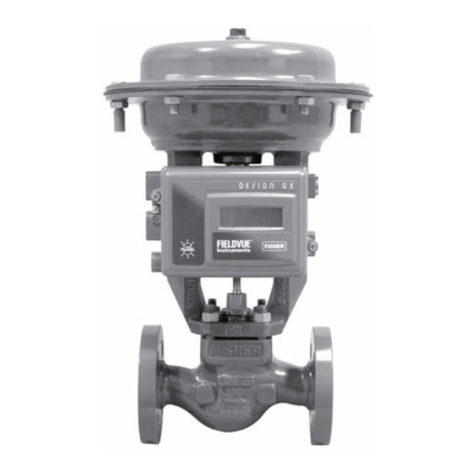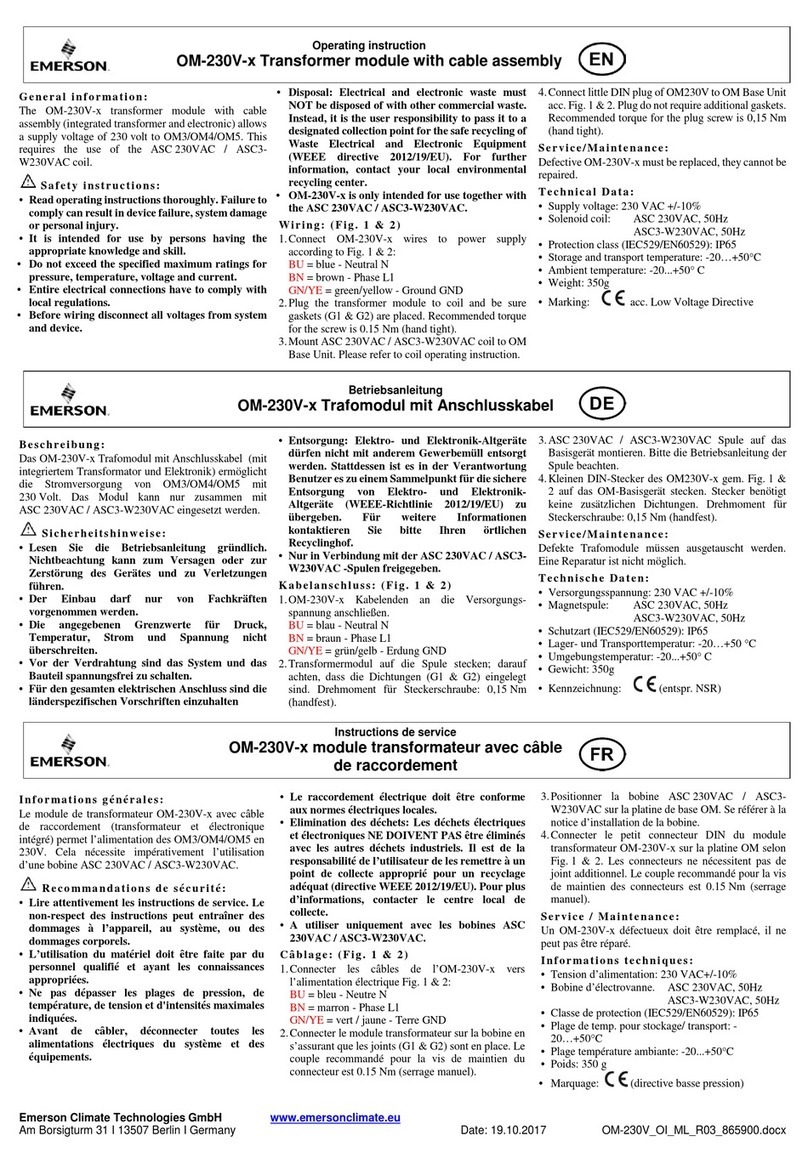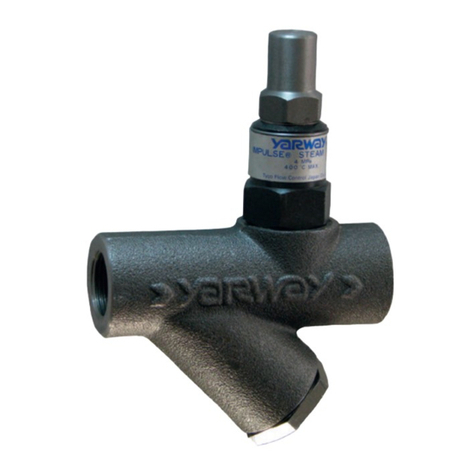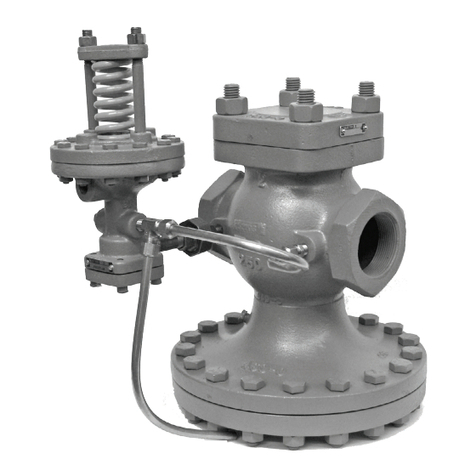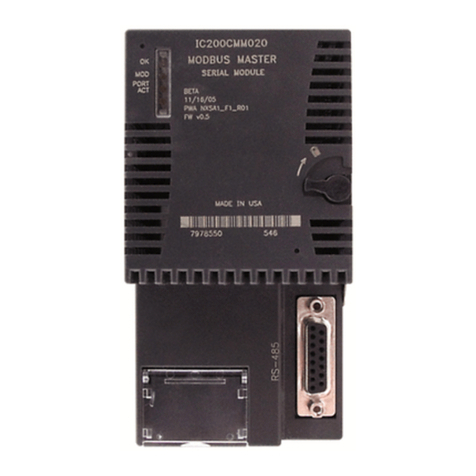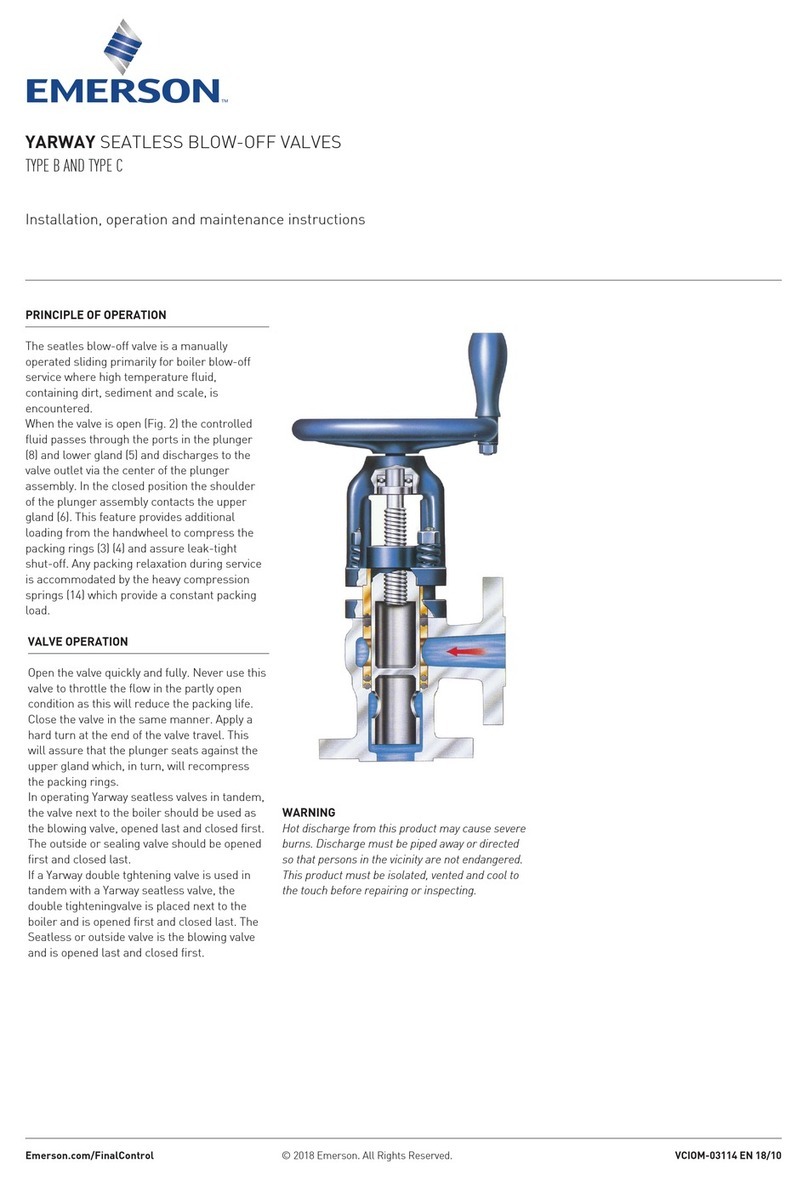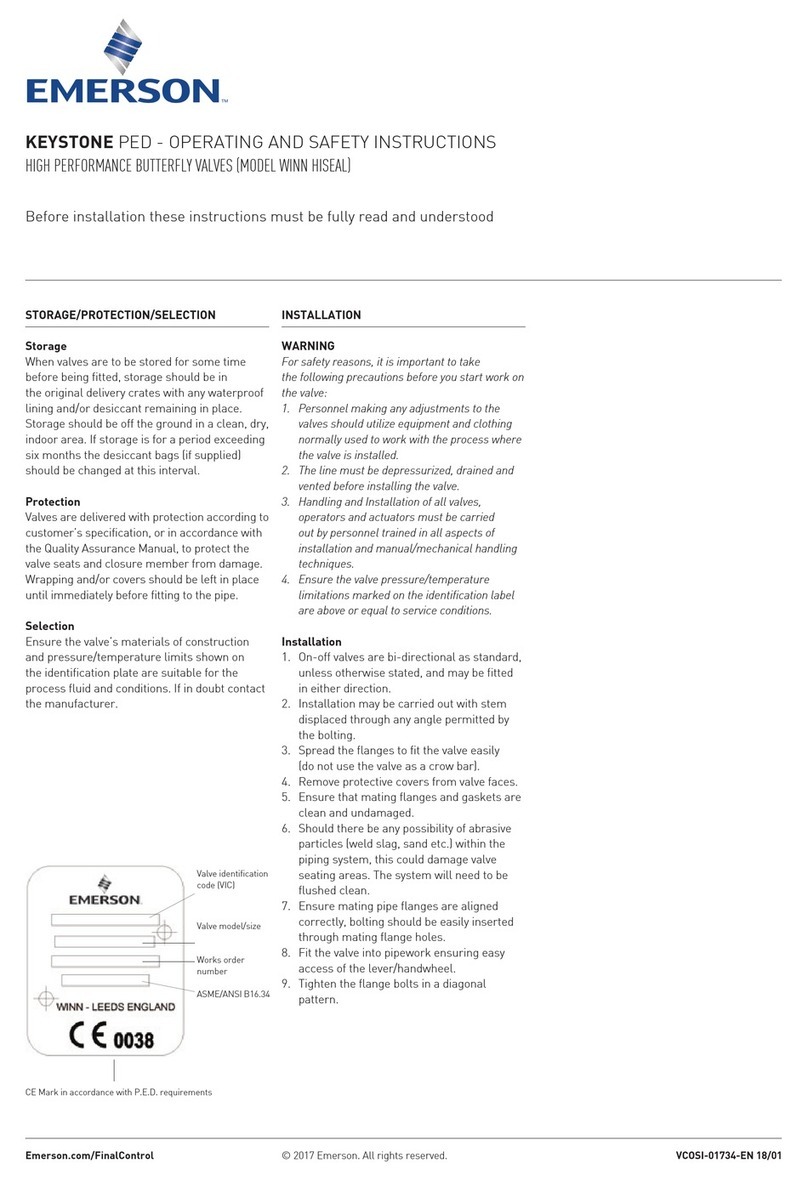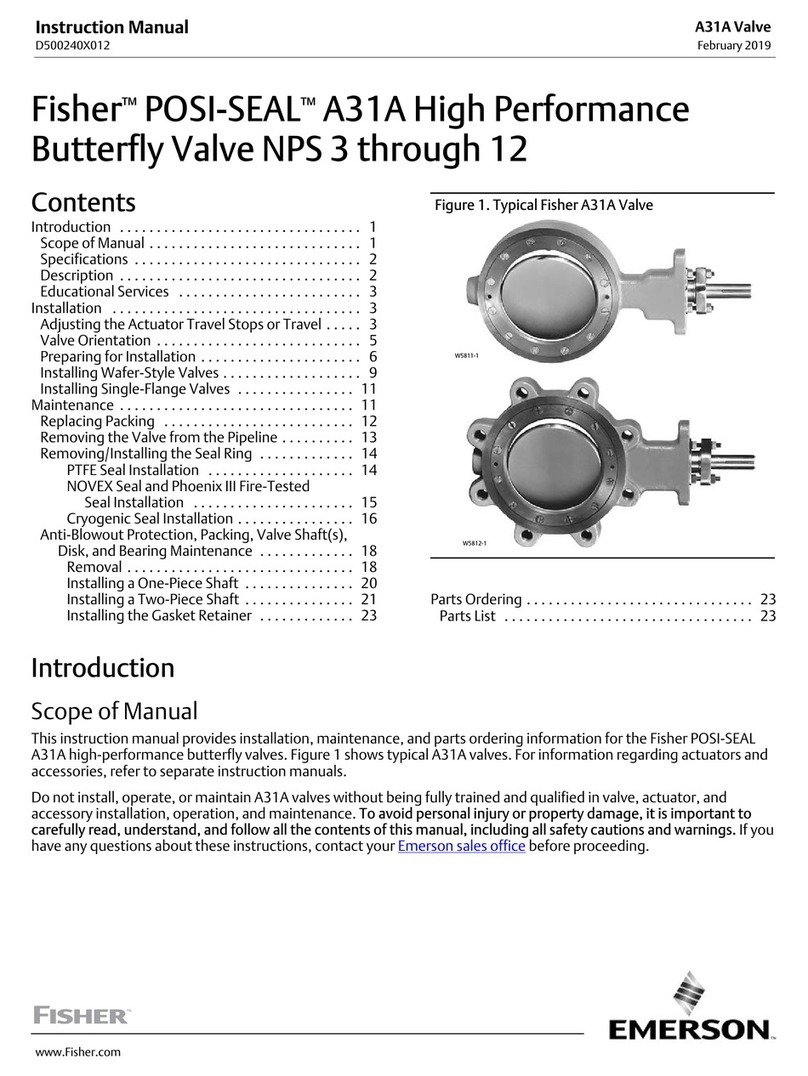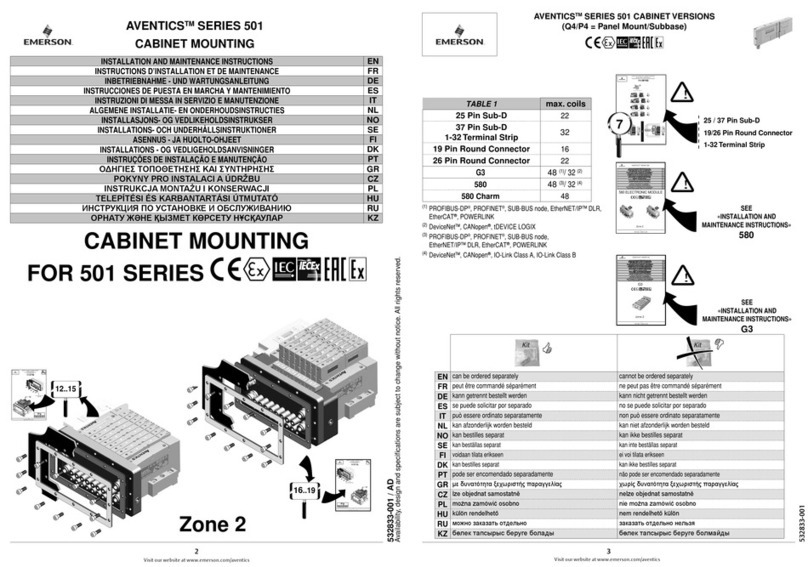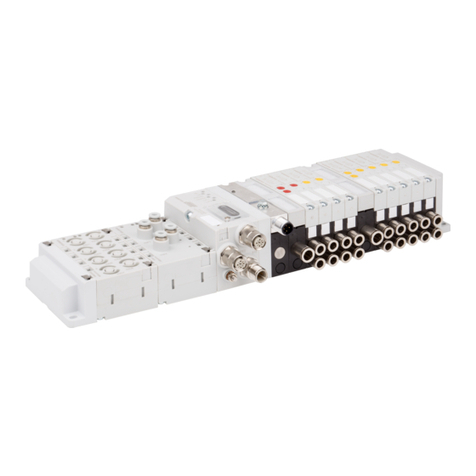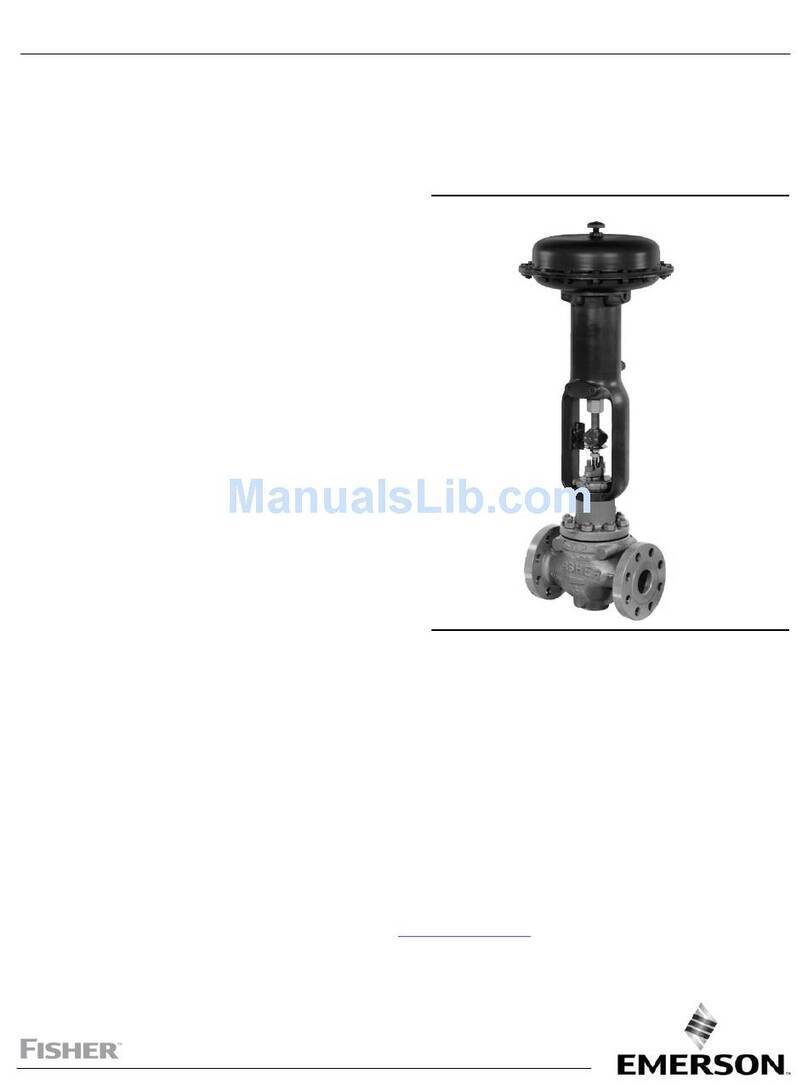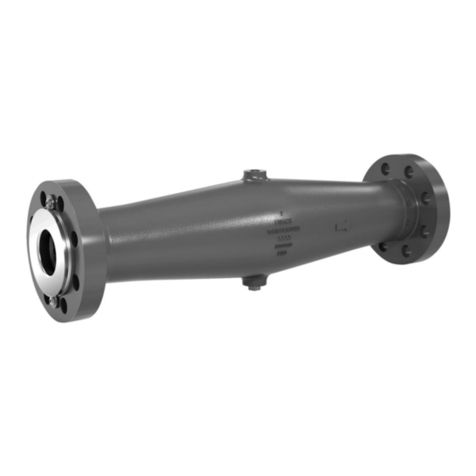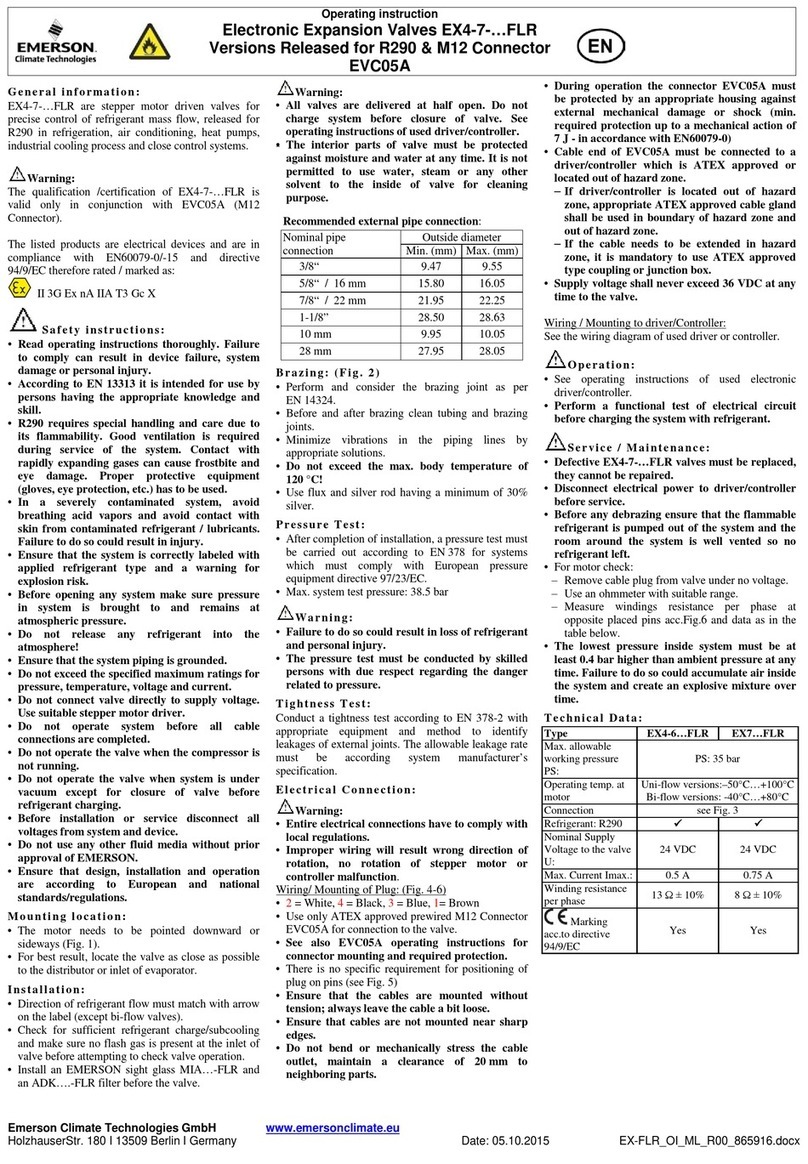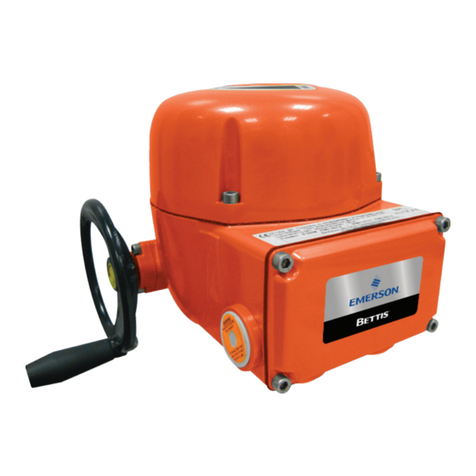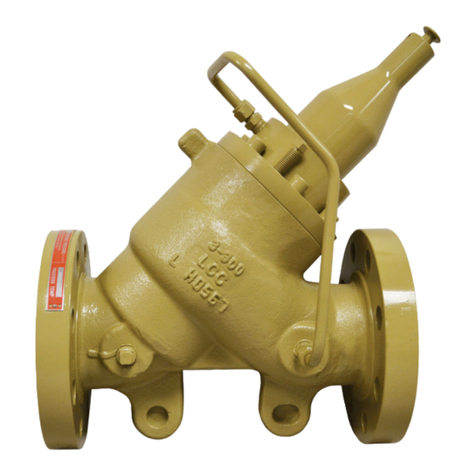
8
CLARKSON SLURRY KNIFE GATE VALVES
KGA+
8 STORAGE
The following are the factory’s
recommendations for storage procedures to
retain maximum product integrity during long
term storage of 1 to 5 years.
1. Valves are normally shipped with gate in
open position, the recommended position
for storage. During storage, the gate should
always be in the open position. Storage
should be in an area out of direct sunlight,
away from heat, ozone and extreme weather
conditions. Freezing is not considered
detrimental as long as the valve is kept
dry. High voltage rectifiers and other ozone
generating equipment and sources should
not be near the storage area.
CAUTION
Valves supplied with spring to extend (fail close)
cylinder actuators are shipped with the gate in
the closed position. DO NOT store a KGA+ with a
spring to extend (fail close) in the open position.
Note: Emerson recommends customers always
use genuine Clarkson OEM sleeves, secondary
seals and other replacement parts to maintain
the expected, superior, performance of their
KGA+. Genuine Clarkson sleeves and secondary
seals from Emerson are easily recognized
by the laser etched identifying marks found
on the outside surface. These marks include
the size, part number, applicable patent
number, elastomer batch compound and date
of manufacture; all of which allow complete
traceability of the part. Clarkson replacement
sleeves, secondary seals and other parts
from Emerson are the only ones authorized
for use and offer the best fit and continued
performance that non-OEM parts simply cannot
give. The use of copycat parts may invalidate
any remaining warranty. If valve requires
further repair, please contact our office for an
estimate of feasibility and cost ofrepair.
The shelf life listed is guideline data and is not
a substitute for examination of cured material
at the time of intended use.
To maintain shelf-life, spare sleeves should be
stored in accordance with the following.
1. Store at ambient temperature up to 80°F
(27°C), with 60 - 90% relative humidity away
from direct sunlight and at a minimum
distance of 15 feet (5 meters) away from
electric motors is mandatory.
2. Care must be taken to avoid storage in a
stressed condition such as piled too high or
on a plain pallet overhanging a sharp edge.
3. First in - first out inventory control should
be practiced.
4. The above elastomer shelf life guidelines
are for components that are not already
installed in a valve.
2. The preferred storage location is a clean,
dry protected warehouse. If valves are to
be stored outside, precautions should be
taken to keep valves clean and dry. Standard
packaging materials provided in valve
shipment cannot be considered sufficient
for outdoor storage.
3. If outdoor storage is required, the
equipment should be totally covered with
a heavy, light colored, plastic covering.
It is essential that the plastic be opaque
to eliminate sunlight, and light colored
to minimize heat buildup. The covering
should be spread in a manner that allows
underside ventilation. To insure proper
ventilation the equipment should be
elevated 2” - 4” (50 - 100 mm) above the
ground.
4. Manual actuated valves may be stored in
the vertical or horizontal position. For air
or hydraulic actuated valves, the preferred
orientation for optimum protection is with
the valve fully opened and the cylinder in
the vertical position. This position gives
the best support to the cylinder rod and
helps reduces the chance of a ‘flat spot’
developing on the cylinder seals. An
acceptable alternate position for valves with
cylinder diameters of less than 6” (150 mm)
is with the cylinder in the horizontal position.
Motor actuated valves should be oriented
in the direction as preferred by the actuator
manufacturer.
5. Valves with cylinder and motor actuators
should be stored in accordance with
actuator manufacturer’s recommendations.
Access ports or panels should be secured
to prevent unauthorized entry and prevent
contamination.
6. Where auxiliary equipment is included,
such as limit switches, solenoid valves, etc.,
care must be taken to avoid moisture and
condensation conditions on the equipment.
7. Storage inspection: visual inspection shall
be performed on a semiannual basis and
results recorded. Inspection as a minimum
shall include reviewing the following:
- Packaging
- Flange covers
- Dryness
- Cleanliness
8. Maintenance shall consist of correcting
deficiencies noted during inspection. All
maintenance shall be recorded. Contact
factory prior to performing any maintenance
if valve is still covered under warranty.
This would put the spring in a compressed,
fully energized position. For storage, it is
recommended the valve sleeves be removed from
the valve housing and stored separately from the
valve. Reinsert sleeves prior to installation.

